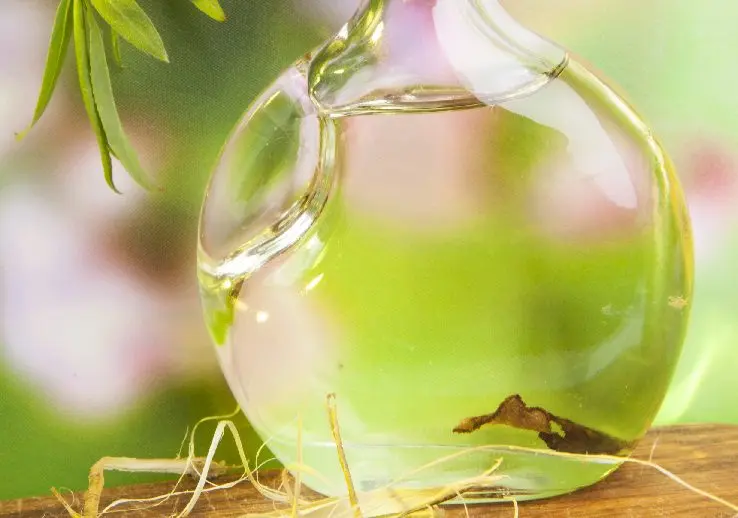The Indian onion in botany is called the tailed birdman (Ornithogalum caudatum). This is a plant with wide leaves and a large round root from the hyacinth family. Ornithogalum originated in South Africa, from there it came to Southeast Asia and the Mediterranean, where it has been growing for several thousand years. In the early 1960s, Indian onions were brought to Russia, where they became widespread due to their ease of cultivation and good decorative properties.
Indian onion in folk medicine
Ornithogalum has practically not been studied by scientists, so it is impossible to buy medicines based on it in a pharmacy. Traditional healers find use of Indian onion tincture – it is used to treat diseases of the joints. The bulb and leaves of the plant contain a large amount of the alkaloid colchicine. The substance stimulates the synthesis of acids, affects the nerve endings and relieves pain.
The burning juice of the plant contains phytoncides, which inhibit the growth of bacteria and pathogenic microorganisms, improve blood flow and relieve inflammation. Indian onion tincture helps with herpes infection and various skin pathologies.

The list of diseases for which tincture is used is quite wide:
- intervertebral osteochondrosis;
- arthritis and arthrosis;
- chronic tonsillitis;
- gingivitis and stomatitis;
- muscle injuries;
- fungus of nails and skin;
- neoplasms;
- insect bites.
The alkaloid colchicine acts as an antispasmodic, which makes it possible to use Indian onion for the treatment of migraine headaches, colds and pressure surges. Hot juice is also used in cosmetology to combat excess weight and cellulite. The plant cleans the air of pathogenic bacteria, so indoor plant lovers grow it in pots.
Recipe and application of Indian onion tincture
Ornithogalum reaches its maturity in the second or third year of growth. Indian onions are dug out of the ground, the leaves are separated, and the onion is cleaned. All parts must be thoroughly rinsed with water. The plant reaches a large size, so one batch of raw materials is enough to prepare a large batch of tincture.
The juice is very pungent, during operation it is necessary to wear gloves and protect your eyes from splashing.
Indian Onion Tincture Recipe for Joints:
- Cut the leaves into narrow strips 5-6 cm long, chop the root.
- Fill prepared jars with raw materials for 1/3 part.
- Fill the container with vodka to the brim and close the lid tightly.
- Insist 21 days in a place protected from sunlight.
- Strain, store in a dark cool room.
Tincture is used for compresses and in a diluted form – for lotions and rinses. Colchicine is a highly active substance, therefore, it is necessary to strictly observe the recommended time of procedures and carry out treatment in courses of no more than three weeks.

Methods of application for various diseases:
- compresses for pain in the joints – moisten gauze with tincture, apply on a sore spot, wrap with a film, insulate with a woolen cloth, hold for half an hour;
- rubbing – a small amount of tincture is actively rubbed into the skin until it feels warm, then put on warm clothes;
- lotions for skin diseases – dilute the tincture with water in equal parts, soak a piece of bandage or cloth, apply to the skin, hold for 15 minutes;
- wounds and diseases of the mucous membranes – 2 tbsp. l. mix the funds with 200 ml of water, treat the affected areas twice a day.
Fungal diseases are treated by rubbing undiluted tincture into the diseased nail twice a day for two weeks. The tool can also be used to improve hair growth. To do this, the tincture is diluted at the rate of one to ten and the head is rinsed after washing.
Safety measures
The plant is highly poisonous and should not be taken internally. If the juice gets on the mucous membranes or in the eyes, rinse the affected area with plenty of water to avoid burns.
Contraindications of Indian onion tincture
Contraindications for the use of tincture:
- kidney failure;
- bleeding disorders;
- exacerbation of chronic diseases;
- pregnancy and breastfeeding.
Indian onion should be used carefully in old age and if you feel worse, stop treatment immediately. The prepared preparation must be tested for the presence of allergic reactions. To do this, a small amount of tincture is applied to the inner bend of the elbow. If during the day the skin does not turn red, you can start a course of therapy.
Attention! Self-medication can be dangerous, consult your doctor.









